The terraced house inside a laboratory
- Published
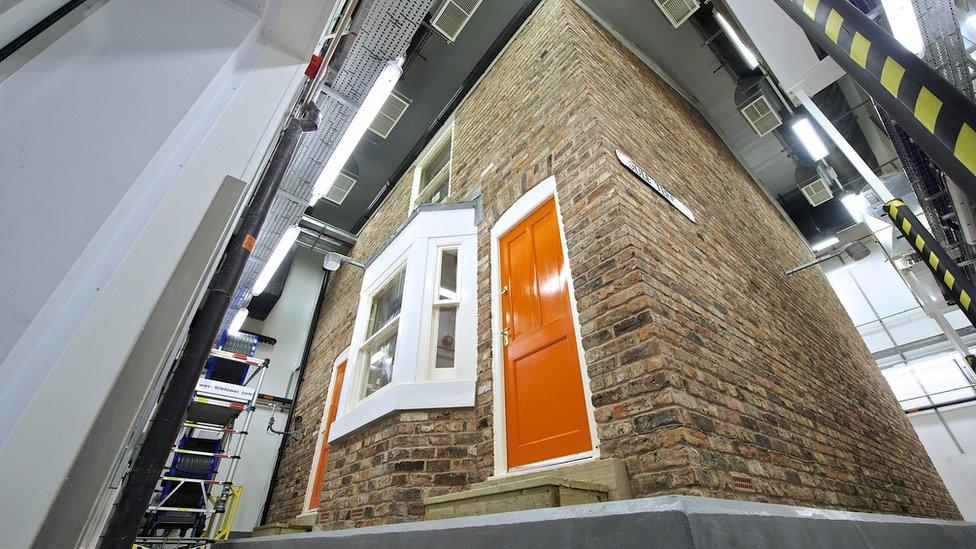
A perfectly ordinary terraced house - except it's inside a laboratory
In order to help the UK meet its energy reduction goals, scientists have dismantled a terraced house and rebuilt it inside a laboratory. The aim is to look for ways of making the rest of the country's homes greener, cheaper and warmer.
Richard Fitton, lead researcher on the University of Salford's Energy House, spends a lot of time in a small red-brick terraced house. He turns the television on, he adjusts the thermostat, he opens and closes drawers, and draws the curtains.
But this typical Victorian-era home isn't where he lives, it's where he works. The building has been carefully taken apart and rebuilt inside a chamber at the university's School of the Built Environment. And this house could be key to helping Britain meet its energy reduction goals.
"You could be saving 60% or 70% of your energy bills year-on-year. You'll also end up with a more comfortable house, a house that's easier to heat and where the acoustics will be better," he tells BBC Radio 5 live's Wake Up to Money programme.
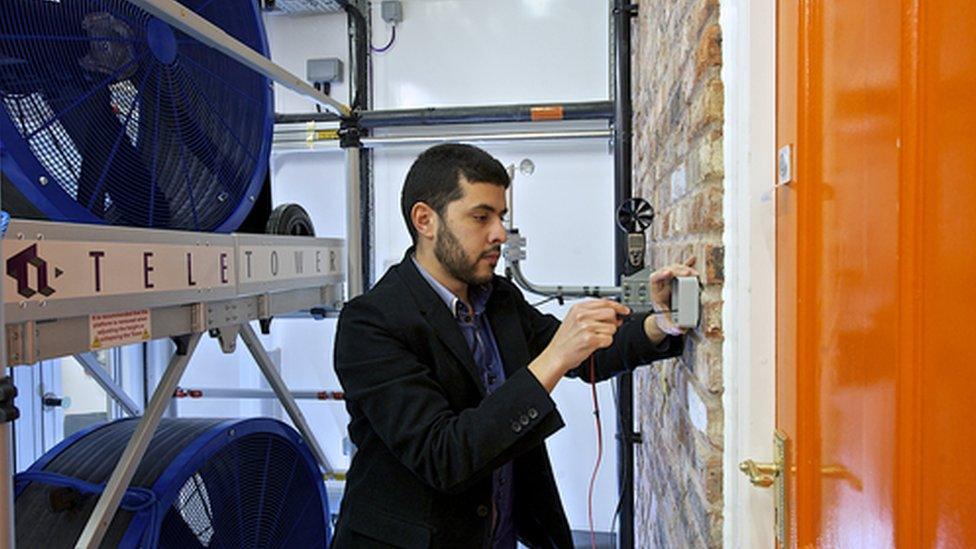
Scientists use the house as a test-bed for energy conservation experiments
The house itself is simultaneously normal and bizarre. Normal because it's an everyday end-of-terrace, a common sight in every town and city.
Bizarre because it's built in the centre of a large, pipe-filled laboratory, where a team of white-coated scientists freeze it, heat it and soak it with rainwater as they test the best ways to conserve energy.
"[It's] a large environmental chamber, arguably a large fridge. We can make the conditions in there change according to the weather we're looking at, so we can take it down to -12C or we can put it up to 30C," says Dr Fitton.
The house isn't occupied during testing; it's dotted with white cylinders that give off the same amount of energy as a person. But if someone were to move in, they would find everything they need.
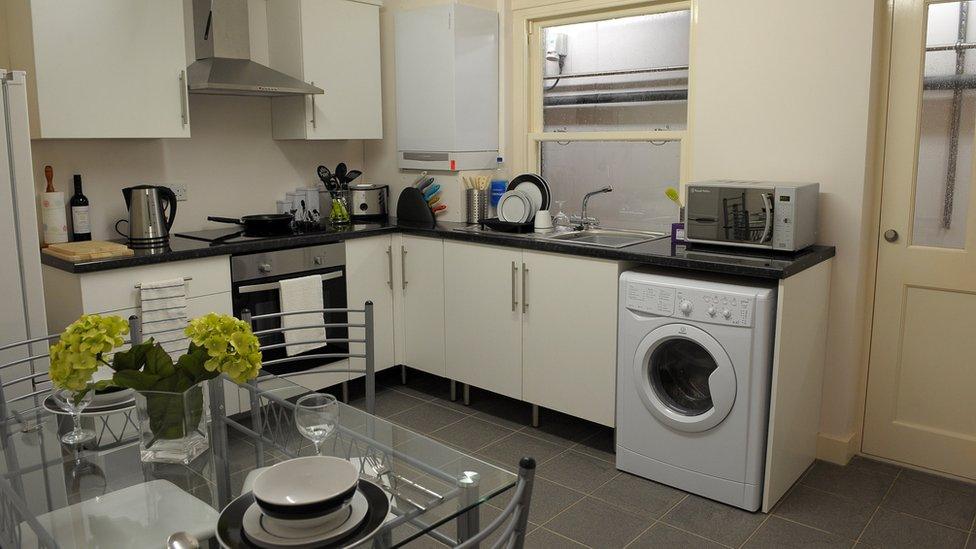
Even though it's inside a laboratory, this is a working kitchen
"Everything works, the TV, the fridge, the DVD player," he explains. "They all have to work to generate the correct amounts of energy and generate the correct amount of heat."
Much of the research carried out by the Salford team highlights how much can be saved just by changing our behaviour. For instance, drawing the curtains across a single glazed window can save around 20% of the heat normally lost.
Controlling the boiler by turning down thermostats or turning off unused radiators can lead to savings of around 40%.
And the house can demonstrate the significant savings that can be made with retrofitting.
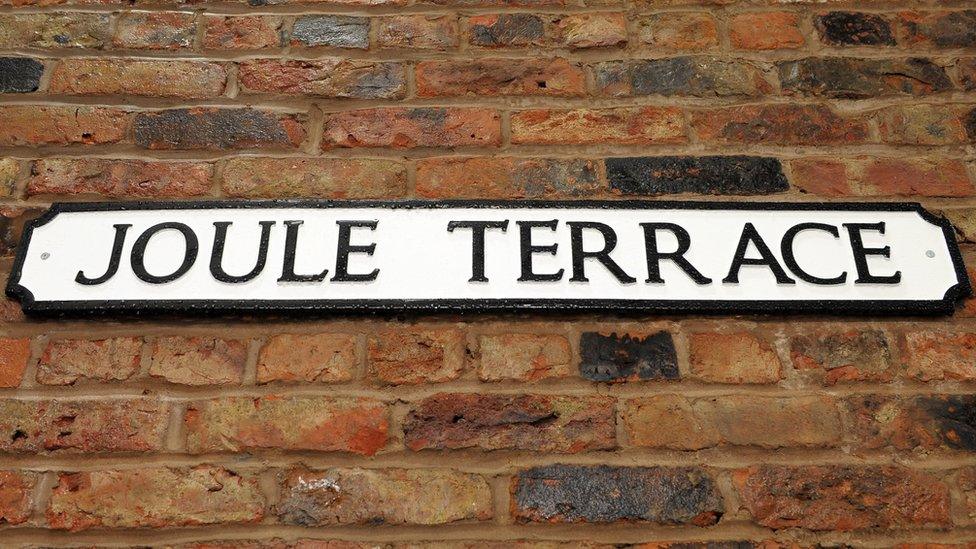
The Energy House lies on the fictional Joule Terrace in the lab
"Heat rises and that's a big problem with heat loss in buildings," says Dr Fitton. "If we take a typical 100mm (4in) of insulation, which a lot of people have got in their lofts, and we upgrade that to 270mm (10in) we can make about a 5% saving."
Because the lab is capable of measuring tiny changes in energy use and efficiency, some of the savings it can demonstrate are simply not worth the effort.
"[The colour] of the walls makes a difference to how the wall absorbs and transmits heat. A black wall will absorb heat more than a white wall and a silver wall will reflect heat."
So should we be painting rooms silver in our quest for greener homes? "You're not going to notice any considerable differences so I wouldn't advise it."
About 30% of the energy used in the UK is used within homes and a fifth of those homes are similar to the Energy House, meaning that without extensive upgrades they are draughty and very inefficient.
Most new-build homes benefit from the latest developments in energy-saving technology, and are typically £629 a year cheaper to run than older properties.
That's why the Salford scientists want to test ways to upgrade existing, older housing stock - to lower energy bills, to create warmer homes and to cut emissions.
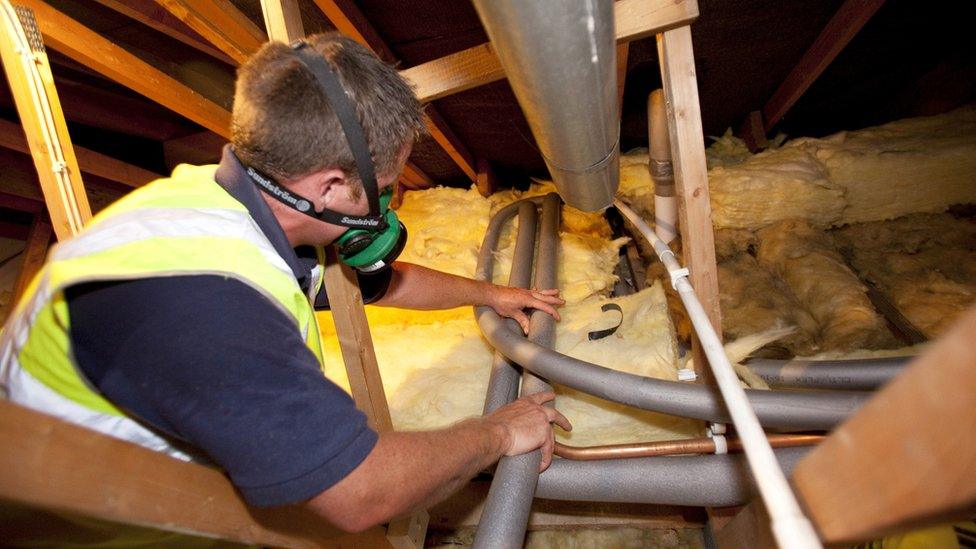
Thicker loft insulation can save 5% on energy bills
A home like the Energy House that has not been upgraded could be made significantly more energy-efficient but only with considerable investment.
"To make substantial savings involves things like floor insulation, wall insulation, new windows and doors," says Dr Fitton.
"That doesn't come cheap, that package of work might be £15,000 to £16,000 but ultimately you'll be saving 60-70% of your energy bills, year-on-year."
Such savings could make a huge difference to some of the poorest households in the UK if they could access them.
The UK Green Building Council (UKGBC) says that improving energy efficiency could permanently reduce typical household energy bills by £300 a year and lift nine out of 10 UK homes out of fuel poverty.
It could also be key to meeting tough emissions targets.
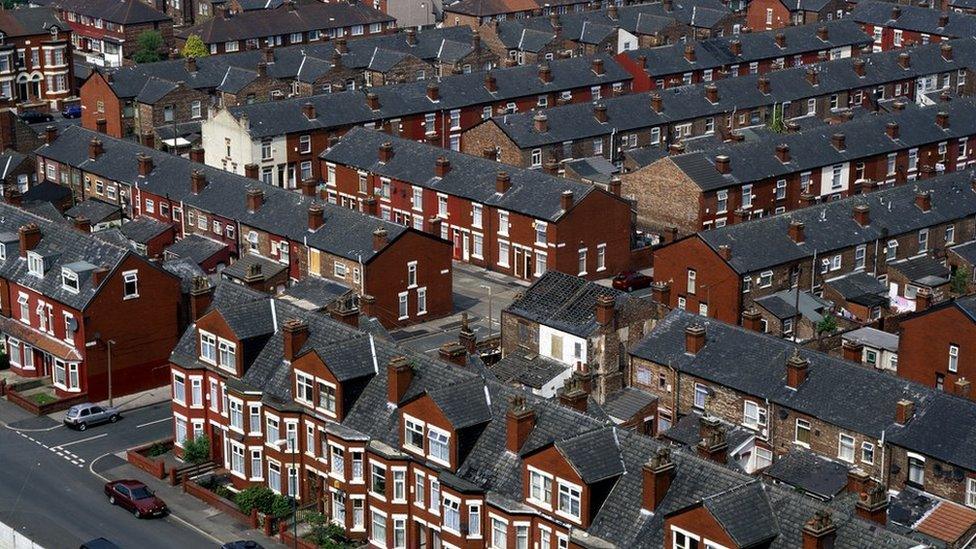
Some 26 million homes will need work on them if the UK is to meet its target for cutting carbon dioxide emissions
Julie Hirigoyen, chief executive of the UKGBC, has expressed concern that the country is not doing enough to retrofit older homes.
She said earlier this year: "To achieve our national carbon target of an 80% reduction in emissions by 2050, we will need to improve almost all of the UK's 26 million homes with energy-efficiency retrofits.
"That means we need to retrofit more than 1.5 homes every minute between now and 2050!"
Salford's terraced-home-in-a-lab is demonstrating exactly what work is needed.